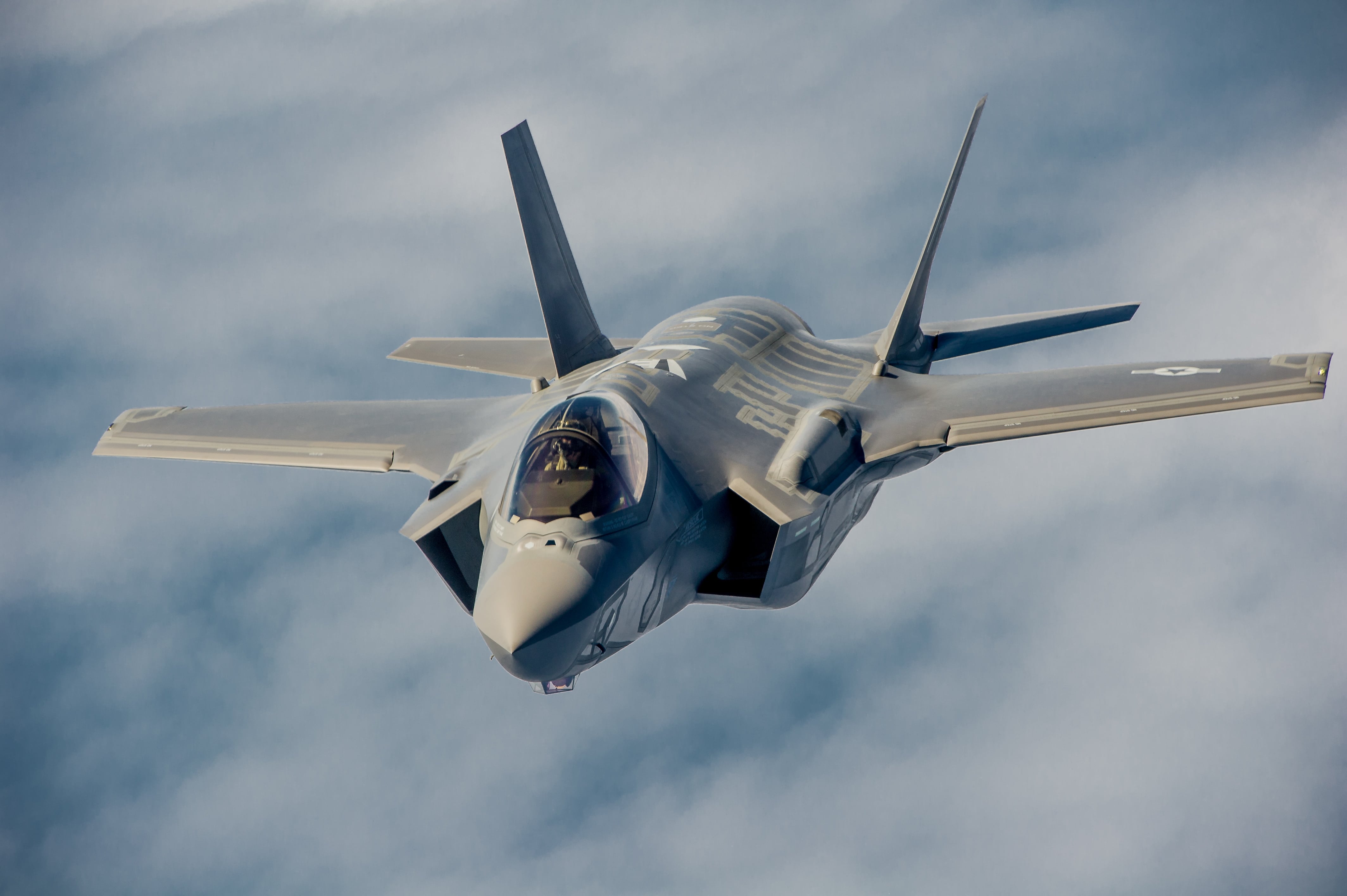COLOGNE, Germany ― The first-ever exhibit of an F-35 fighter jet at this week’s Berlin Air Show could inject a new sense of competition for a key German military program that has already appeared to tip toward the European-made competition.
The U.S. Air Force plans to present two specimens of its fifth-generation aircraft as a static display at the show, which starts Wednesday. The two planes arrived from Luke Air Force Base, Arizona, on Sunday evening after what officials termed the aircraft’s longest nonstop flight, at 11-plus hours.
Manufacturer Lockheed Martin said the U.S. air service, as the weapons’ owner, has the lead on the exhibit planning in Berlin. No F-35 flight demonstrations were planned as of Monday.
“The Berlin Air Show represents a unique opportunity for the United States to showcase its leadership in aerospace technologies while supporting various armament procurement competitions taking place throughout Europe,” U.S. European Command said in a statement.
RELATED

That is a reference to the upcoming high-stakes race to replace Germany’s aging fleet of Tornado aircraft. Besides the F-35, additional U.S. products considered by Berlin for that program are the F-15 and the F/A-18, both made by Boeing.
The preferred candidate for the Germans, however, is a beefed-up version of the Eurofighter Typhoon, made by a consortium of Airbus, BAE Systems and Leonardo. That preference is in part based on industrial policy calculations. Nursing a European combat aircraft industry is a prerequisite for fulfilling the promise of a militarily stronger Europe, the thinking goes.
Airbus Defence and Space chief Dirk Hoke told the Welt am Sonntag newspaper that if Germany picks the American F-35, it would upend plans for the German-French co-development of a new-generation aircraft that would begin service sometime in the 2040s.
Officials from both countries are expected to sign a top-level agreement at the Berlin Air Show about that future platform’s envisioned characteristics.
“As soon as Germany becomes an F-35 nation, cooperation with France on all combat aircraft topics will die,” Hoke warned.
Airbus is in line to play a key role in the Franco-German “future combat air system,” although competition to lead the project is still playing out among industry heavyweights from both countries.
Meanwhile, a U.S. delegation of Lockheed Martin executives and government officials is expected to hand over detailed data about the jet to the German Defense Ministry on Tuesday. The move comes in response to a request for information that went out to all potential vendors as part of Germany’s efforts to survey the market.
Some backers of the F-35 here hold the somewhat cynical view that Germany would much rather not have a competitive combat aircraft in service as an excuse for opting out of future operations.
Defense Minister Ursula von der Leyen, for her part, said in an interview with the Bild am Sonntag newspaper over the weekend that Germany would have had the capability to partake in recent strikes against suspected chemical weapons sites in Syria.
“We weren’t asked this time,” she was quoted as saying.
Critics of the F-35 as a choice for Germany argue that the planes would be much more expensive than the Eurofighter Typhoon option. And that’s not even counting the cost of sustaining the fleet, especially in relatively low numbers, and the prospect of ceding key program decisions to a trans-Atlantic partner that many in Germany have come to see as increasingly capricious.
Sebastian Sprenger is associate editor for Europe at Defense News, reporting on the state of the defense market in the region, and on U.S.-Europe cooperation and multi-national investments in defense and global security. Previously he served as managing editor for Defense News. He is based in Cologne, Germany.







